The software development industry keeps evolving at a rapid pace. One of the recent innovations in the sector is the growing demand for low-code development. It serves as a game-changing force that is completely reshaping how we build software applications.
It is no surprise that organizations compete to develop and launch new applications on the market faster. That is where low-code development proves to be helpful. It helps lower the software development time and gives organizations a competitive edge.
Moreover, even if you do not have much experience in coding, you can still develop high-performing, complex applications with a few clicks.
That’s not all! Businesses can also customize the prewritten programs to meet their specific needs. Sounds unbelievable? However, it’s true! Before you start leveraging low-code development, you must have an idea of the latest trends, vital statistics, and facts.
This article will provide you with an overview of the future of low-code software development. Also, it will give you an idea of the impact of low-code development on modern businesses. Finally, we will take you through the most critical low-code statistics to explore in 2024.
What is Low-Code Development?
Low-code is a visual approach to application development that minimizes hand-coding and ensures the faster delivery of applications. The drag-and-drop features and graphical user interface automate various aspects of the development process. As a result, it eliminates dependence on traditional programming approaches and speeds up the software development process.
If you are wondering why you should use low-code development, then take a look at some of these convincing reasons.
- Better collaboration and communication
- Greater scalability and flexibility
- Lowers development time and ensures faster time-to-market
- Enhanced customer experiences
- Easy legacy modernization.
Key Stats of Market Adoption of Low-Code Development
- 75 percent of businesses are likely to adopt a mix of conventional and low-code innovations.
- Prudent businesses are likely to leverage low-code technology for speed (63%), flexibility (83%), and automation (67%).
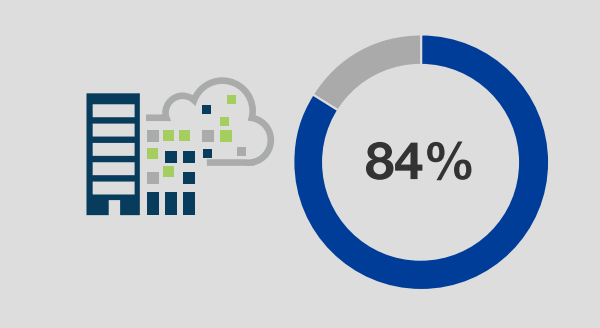
- 84 percent of businesses are expected to switch to low-code and no-code technologies in the future.
- The market is adopting low-code platforms at the highest rate of 17% in the energy, exploitation, and extraction industries.
- Nearly 79% of businesses use of citizen development in a year for Web app development.
- About 41% of firms already have active citizen development initiatives. However, 20 percent of organizations are still preparing or evaluating these.
- 31% of businesses using low-code development claim to not have yet delivered the most valuable application leveraging this technology.
Also Read : Best Technology Stack For Mobile App Development
- Low-code technology is a part of nearly 63% of maintenance apps. 40 percent of respondents claim that less than 25% of the apps they create every year prioritize innovation.
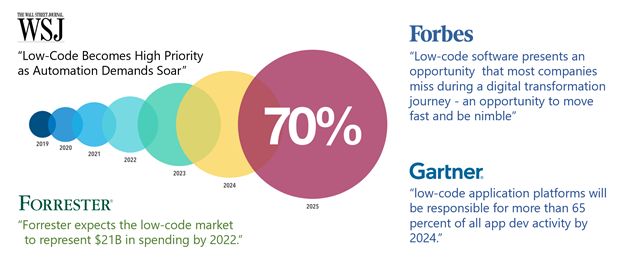
- According to Wall Street Journal, by 2025, 70% of new applications will likely use no-code or low-code technology. It is an increase of nearly 20 percent in 2020.
- Nearly 40 percent of tech leaders believe that low-code development will improve the diversity of IT organizations.
- 84 percent of organizations are now using low-code technology owing to its ability to minimize the burden on IT resources and its faster time to market. Moreover, these low-code statistics convince businesses to actively engage in the creation of different digital assets.
- 30 percent of businesses are willing to use custom low-code development in the future for complex business logic.
- By 2025, business buyers outside the IT organization will account for nearly half of new low-code clients.
- By 2023, businesses will use cloud-native methodologies to develop and deploy over 500 million digital services and apps. It is equivalent to the number of apps developed in the past 40 years.
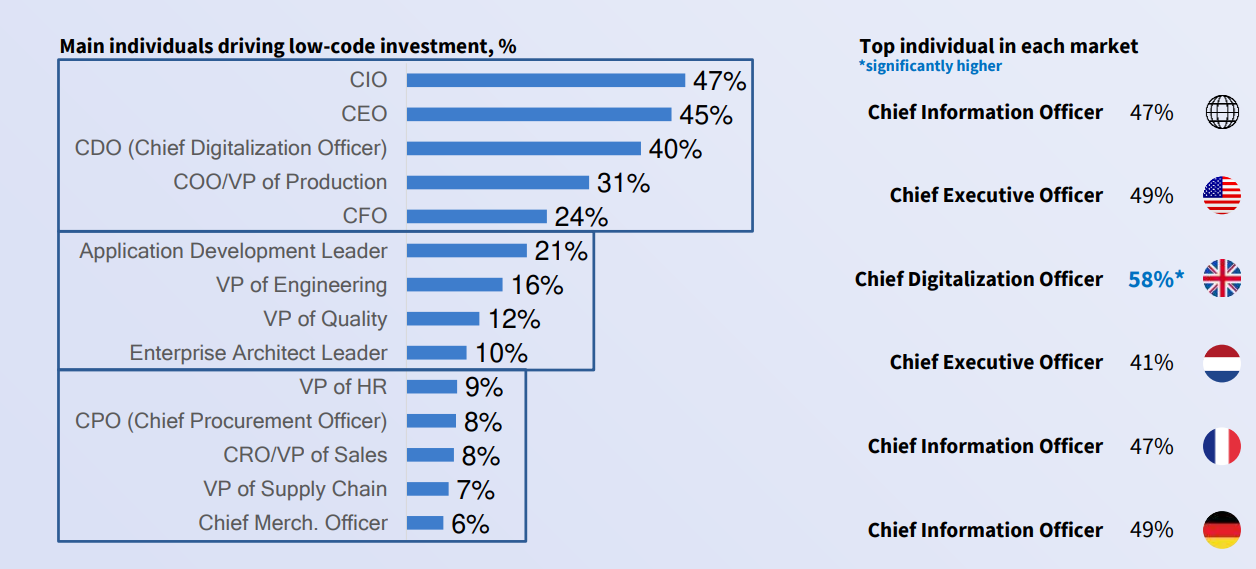
- As per a survey by Gartner, C-level executives are unconsciously or consciously laying the foundation stone for digital delivery with the latest technologies, like low-code development. In 2022, around 47 percent of CIOs believed investing in Low-code development and now with the increase to around 66 percent of CIOs plan to deploy low-code platforms in the next two years.
- 80 percent of organizations believe that citizen developers are vital for the success of their business.
- 82 percent of firms are experiencing challenges in hiring qualified software engineers. Therefore, they leverage citizen developers to develop and maintain mobile apps.
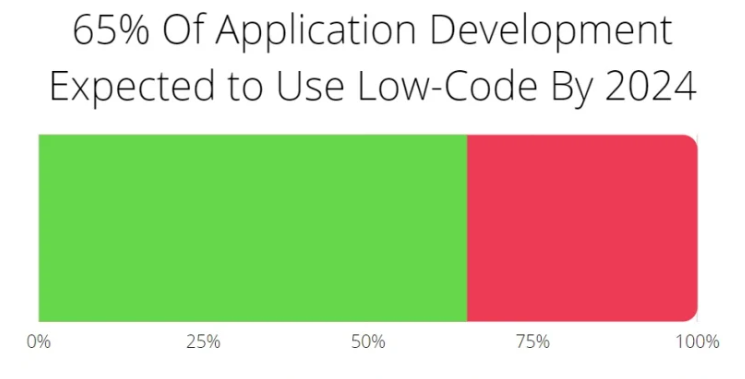
- Gartner forecasted in an arbitrary survey that by the end of 2024, no-code and low-code platforms are likely to handle more than 65 percent of all app developments.
- Citizen developers have been successful in freeing up IT teams in nearly 80 percent of organizations. As a result, the dedicated development team get more time to focus on higher-level projects.
The Significance of Low-Code Development Solutions
Low-code platforms enable users to easily develop and deploy applications with little or no knowledge of coding and programming. Therefore, it becomes a top solution for businesses that are willing to build applications with minimal resources.
- The global market for low-code platforms is likely to reach USD 65 billion by the year 2027.
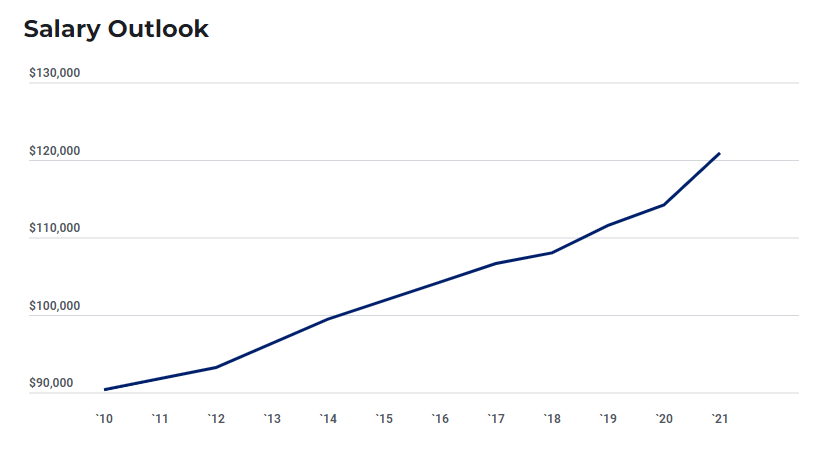
- The average salary of a software developer in the United States is USD 110,140. However, by using low-code tools, average companies can avoid hiring two IT developers. Also, the application developed is likely to be successful in improving business value by USD 4.4 million within three years.
- In comparison to the traditional app development platforms, the no-code solutions make use of nearly 70 percent fewer resources.
- 75 percent of tech professionals are of the view that low-code development is an evolving trend that they cannot overlook.
- The use of no-code or low-code development services can lower the app development time by 90 percent.
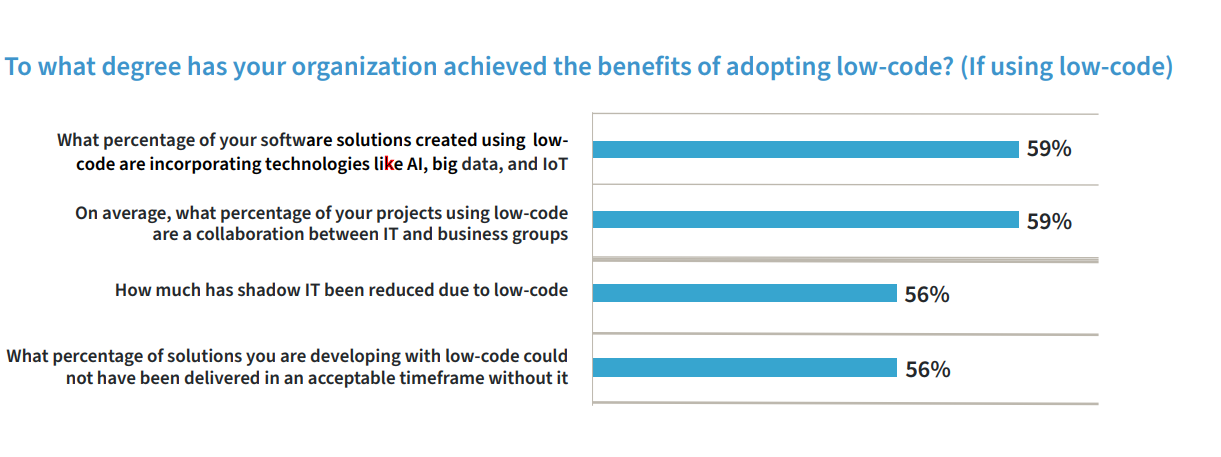
- The business and IT teams collaborate on about 59 percent of low-code development projects.
- More than 65 percent of non-IT professionals will build IT products and services by the year 2024.
Must-Know Facts About Low-Code Development
No doubt, having an idea about the statistics of low-code development is crucial. However, a fact that cannot be overlooked is that the benefits of low-code go beyond numbers. Take a look at some of the critical points relating to low-code development that you must know.
No-code and Low-code are not the same
When you hear about no-code and low-code development, you might have the perception that they are both the same. However, they are completely different.
Wondering what makes them different? For low-code development, you need some basic knowledge of coding. However, in the case of no-code development, you can completely depend on a visual user interface.
One thing that is common between the two is that they both make use of code. But most of the codes are hidden from the end-user, thereby making things easier for them. As a result, you do not have to worry about using stacks of codes to develop a program.
Drag-and-drop interfaces simplify app development
In the competitive era, launching new applications faster in the market is the key to success. However, Mobile app development does take a lot of time.
Are you thinking about how to lower the development time and simplify the app-building task? In that case, leveraging low-code development can be an ideal solution.
Wondering how? Low-code development makes use of visual modeling and has drag-and-drop interfaces. As a result, developers can easily interact with the visual representation of codes.
With minimal training, it allows you to create high-performing, secure, and scalable apps in a hassle-free manner.
Low-code platforms use fewer codes
It is no surprise that low-code development requires less code. The term ‘low-code’ was coined by Forester in 2014.
Low-code platforms use fewer codes
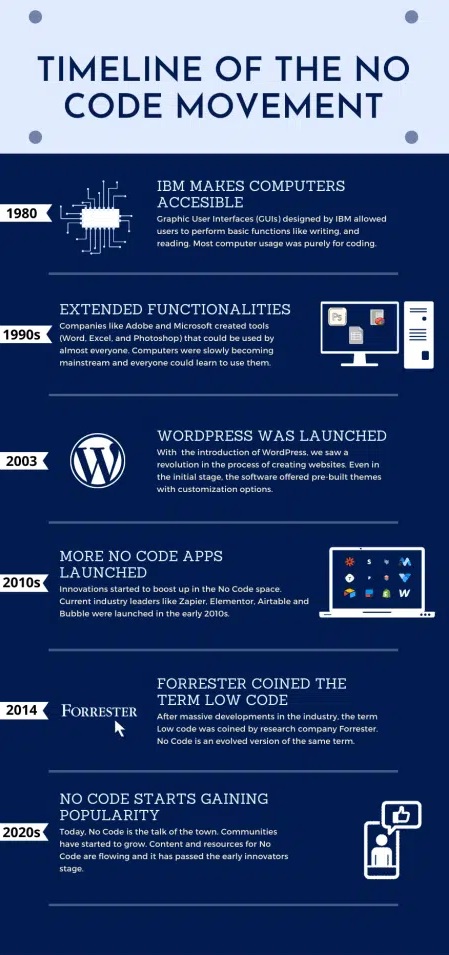
As per the definition, low-code employs declarative and visual techniques instead of the traditional lines of programming. It allows both proficient and novice developers to easily build applications. Moreover, the best part is that they would require minimal training to get started.
Some of the common features of low-code development include process modeling, reusable components, and drag-and-drop tools. Small teams and even individuals can deliver apps in a matter of just a few days or weeks.
Citizen developers make software development more accessible
Did you know that the concept of citizen developers dates back to 1982? Yes, you read it right! It gave rise to a fourth-generation programming language with the use of computer-assisted software engineering tools. However, the movement fell short.
But as no-code and low-code platforms continue to gain popularity, collaboration becomes easier. It enables all the team members to work together and develop solutions. As a result, custom software development is simple and quick.
Low-code is highly scalable and customizable
Low-code works just like the building blocks. It can enable you to develop and customize your applications in much less time. All you need to do is make use of the prefabricated sets of integrations or code.
Simply tweaking the existing codes will allow you to build applications that can effectively cater to your needs. Moreover, as your business grows, you can also scale the apps to meet evolving needs.
Benefits of Low-Code Development: Important Statistics to Know
Are you wondering why your business should start using low-code platforms? In that case, here are the low-code statistics you must know.

- No-code development are nearly 10x faster in comparison to traditional development approach.
- If you are in search of a solution to improve your app backlog in 2024, low-code development is the best choice. Nearly 12 percent of low-code users believe that the use of low-code tools has brought about a significant improvement in the app backlog.
- 72 percent of users state that they make use of low-code platforms to develop apps in less than 3 months.
- Consumers who made use of intelligent process automation and low code were able to make an ROI of 509% after 5 years.
- About 80 percent of users agree that low-code platforms help automate routine development tasks like programming business forms and rules.
- Replacing the old systems with minimal-code platforms has the potential to boost ROI by 253%. Moreover, the payback time is just 7 months.
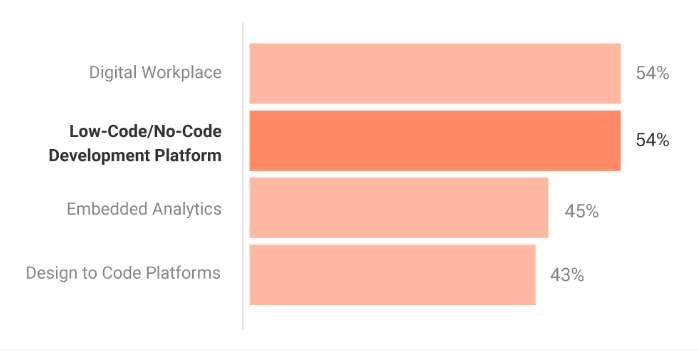
- 54 percent of organizations leveraging low-code platforms were successful in optimizing cost on app development.
- Companies using low-code platforms to develop customer-facing apps are likely to increase their revenue by 58 percent on average.
- Organizations using low-code solutions were 21 percent happier in comparison to those not using low-code technology. Therefore, leveraging low code can enable your business to stay ahead in the competitive era.
- 28 percent of users were able to master app development in less than 2 weeks.
- Business owners claim that low-code development allows them to improve agility and promote cost-effectiveness.
- 43 percent of firms using low-code development stated that they were more agile than before.
- On average, 12 applications are built with the use of a low-code platform annually.
- 70 percent of first-time users of low-code platforms had no prior experience or knowledge of coding.
- 90 percent of users of the low-code platforms have less than five monthly app requests in their backlog.
- The staggering low-code statistics of nearly 84 percent of businesses leveraging no-code or low-code tools make up for the technical gap created due to a lack of developers.
- 71 percent of organizations that use citizen development have been successful in accelerating the application development process by 50%. Moreover, 29 percent of businesses have experienced an increase in delivery time by two times or even more.
Low-Code Statistics Showing its Market Growth in 2024
- Low-code development will account for over 65 percent of application development activities in 2024.
- As per Gartner’s forecast, the demand and use of low-code platforms are increasing and will enhance legacy application modernization efforts. About 35 percent of government legacy applications will be replaced by solutions developed on low-code application platforms by 2025. Also, the multidisciplinary teams will be responsible for maintaining these apps.
- By the year 2030, the global market for low-code development platforms is likely to generate a revenue of USD 187 billion.
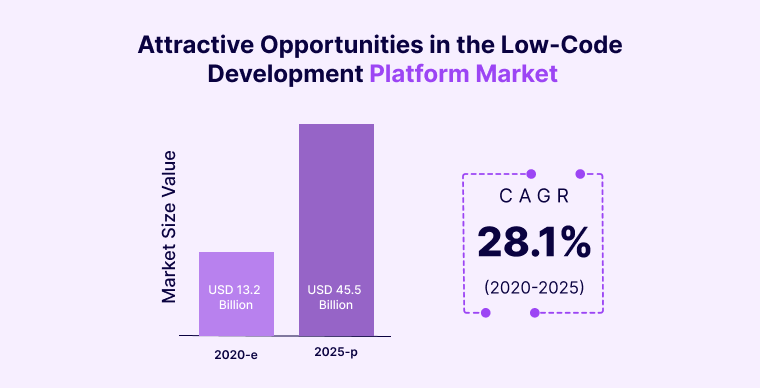
- The low-code development platform is likely to experience growth at a CAGR of 28.1% and reach USD 45.5 billion by 2025.
- 75 percent of large organizations will leverage a minimum of four low-code development tools for citizen development initiatives and IT application development.
- Over 500 million services and applications will be developed with the use of cloud-native approaches.
- Today, about 77 percent of organizations use low-code technology.

- The value of the global market for low-code platforms was USD 22.5 billion in 2022. However, it is likely to grow by a CAGR of 26.1 percent and reach USD 32 billion in 2024.
The Top Low-Code Development Trends to Know in 2024
- Low-code platforms will break the existing barriers and make development accessible to all.
- More and more large organizations are likely to adopt low-code development to build complex applications in less time.
- The low-code trend will expand to develop complex applications.
- An increase in the demand for big data and cloud computing information security for organizations will ensure the growth of low-code by 13 percent.
- Low-code platforms will seamlessly integrate with Agile methodologies and DevOps.
- The integration of machine learning and artificial intelligence into low-code platforms will unlock new possibilities for businesses.
- Low-code development will enhance the performance of business applications. Moreover, it will also make it easier for the applications to scale as per the growing requirements of businesses.
- Low-code platforms will incorporate the latest governance and overcoming mobility security challenges to improve the reliability of applications.
- Low-code applications will mainly focus on user experience.
Also Read : Top Mobile Application Development Trends
Prominent Use Cases of Low-Code Development
According to Forbes, the following are the prominent use cases as per low-code statistics.
- 22 percent of the existing on-premises applications are now being developed using low-code platforms to ensure better UI.
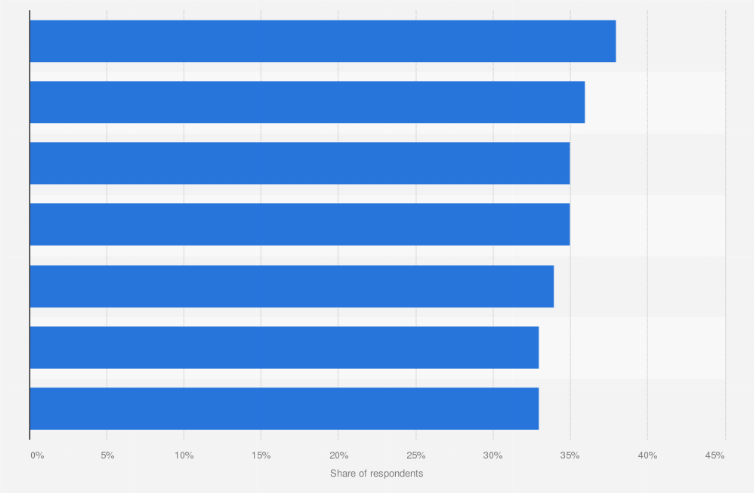
- A global survey by Statista states that 33 percent of participants said that their organization uses low-code for data visualization and modeling.
- Nearly 49 percent of applications that are used to streamline business workflows and processes are built using low-code tools.
- One of the most popular types of citizen development is web apps. Citizen developers create an average of 13 apps.
- 42 percent of low-code applications are likely to replace email, spreadsheets, and paper.
- Nearly 58 percent of low-code development is likely to be used for the building of data-collection applications and forms.
Notable Low-Code Statistics Key Challenges for Development
No doubt, low-code development offers ample benefits to global organizations and speeds up the app development process. However, a fact you cannot overlook is that it comes with certain challenges. Some of the prominent challenges include security risks, scalability concerns, limited customization, and more.
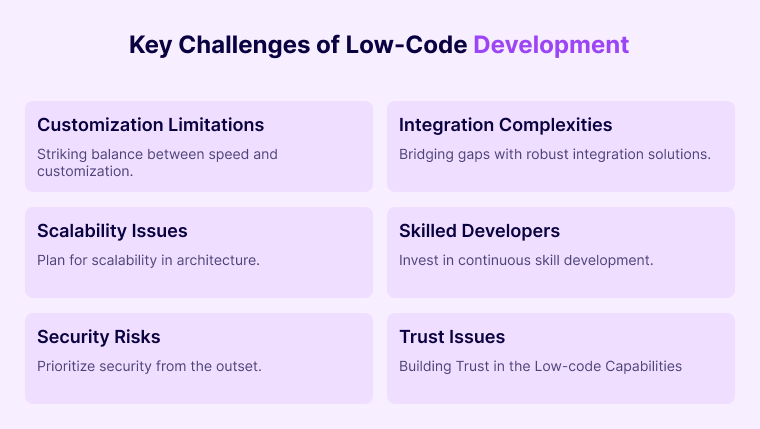
As a result, low-code platforms become unfit for certain organizations. Moreover, it may not be ideal for the development of mission-critical applications.
To understand the potential challenges better, dive into the significant low-code statistics.
- 37 percent of businesses have a concern relating to the lock-in with a low-code or no-code vendor.
- 32 percent of businesses still do not believe that it is possible to build applications using low-code tools.
- 28 percent of organizations have concerns relating to the scalability of apps built with low-code platforms.
- 5 percent of users are of the view that low-code applications are clunky.
- 25 percent of businesses have concerns about the security of applications developed using low-code tools. Therefore, partnering with an expert low-code development team can be an ideal solution to overcome this problem.
- 43 percent of organizations are not able to leverage the low-code development platform owing to a lack of expertise.
Key Industry Facts about Low-Code Development
The following quick facts about low-code statistics that brief you on its presence in the industry.
- There exist 13 low-code platforms for the development of machine learning solutions.
- One of the negative words used to describe low-code applications is “clunky.” You can find this term in nearly 5 percent of reviews for no-code or low-code development platforms.
- There are nearly 233 low-code platforms available for application development.
- 42 vendors who provide platform as a service (PaaS) primarily make use of low-code development tools.
Also Read : SaaS vs PaaS vs IaaS: Analyzing The Key Differences
The Best Low-Code Platforms for App Development
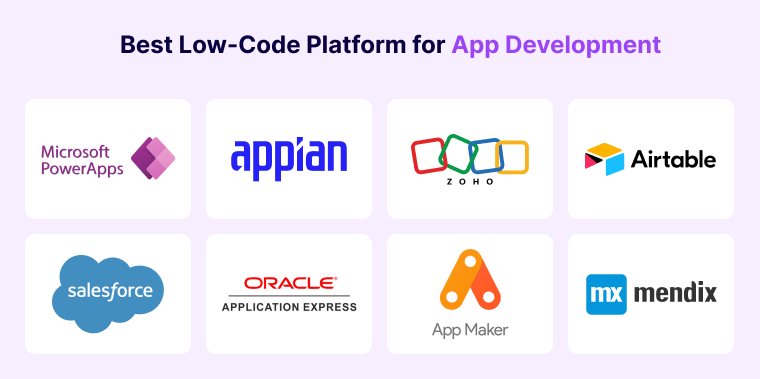
Now that you have an idea of the top low-code statistics, you must be willing to get started with app development. Are you wondering which platform to use? There are many flexible options available in the market surrounding the trend. In that case, here are some of the prominent platforms that you can look out for:
- Microsoft PowerApps
- Appian
- Zoho Creator
- Airtable
- Salesforce App Cloud
- Oracle APEX
- Google App Maker
- Mendix
Conclusion
Low-code development has been a growing trend in recent times. It is not likely to slow down any time soon. Therefore, if you want to develop apps faster and stay ahead of the curve, you must start using low-code platforms and tools.
By now, you must have a comprehensive idea of the low-code statistics relating to the latest trends, adoption, market size, and more. It is time to start building apps with low-code platforms and see the benefits for your business.
Low-code development can significantly lower your costs and enable you to launch apps in much less time. Collaborate with the experts and ensure the best outcomes.


-
What are the advancements in low-code development to expect in the future?
The future of low-code development holds endless possibilities. As the platform continues to evolve, you can expect an increase in the use of low-code development approaches for building complex applications. Moreover, advanced automation and AI integration are other advancements you can expect in the future.
-
What is the impact of low code on the time-to-market of an application?
Low-code development can significantly lower the time taken to build an application. As a result, it speeds up the time-to-market and allows businesses to launch their new apps ahead of their rivals. It provides them with a competitive edge and enables them to stay ahead of the curve.
-
Is low-code development the future of app development?
Undoubtedly, low-code development is making a significant impact on the industry. It allows rapid development of applications and empowers even non-technical team members to build applications in a hassle-free manner. Moreover, it drives innovation and fosters better collaboration.











